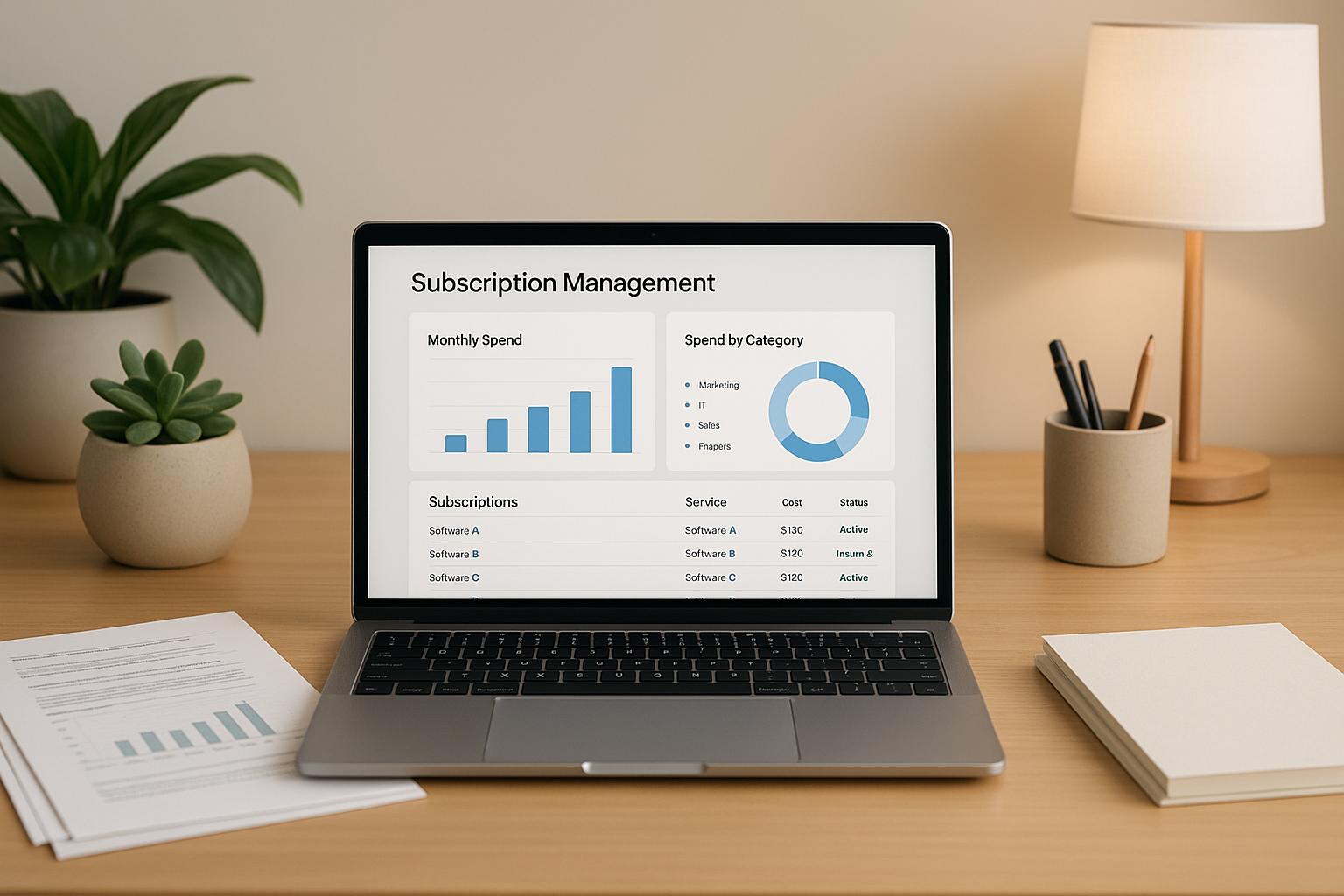QSBS in M&A: Tax Considerations for Founders

Selling your company? Qualified Small Business Stock (QSBS) could save you millions in federal capital gains taxes. Here's what you need to know:
- QSBS Tax Benefits: If your shares qualify, you can exclude up to 100% of capital gains - potentially reducing your tax bill to $0.
- Eligibility Basics: QSBS applies to U.S. C corporations with assets under $50M (or $75M after July 4, 2025). Shares must be held for 5 years (or 3-5 years for partial exclusions after July 4, 2025).
- Recent Updates: Legislation now allows higher exclusions - up to $15M or 10x your investment basis for shares issued after July 4, 2025.
- Planning is Key: Stock sales preserve QSBS benefits, while asset sales don’t. Poor structuring or documentation can disqualify you.
- Common Mistakes: Issues like stock redemptions, secondary purchases, or exceeding asset limits can void QSBS eligibility.
Proper planning, early compliance, and expert advice are critical for maximizing QSBS benefits in M&A deals.
QSBS Basics and Tax Benefits
To fully appreciate the advantages of QSBS, it’s crucial to grasp its key principles and tax perks.
What is QSBS?
Qualified Small Business Stock (QSBS) refers to shares in a U.S.-based C corporation that meets specific asset and operational requirements. The standout benefit? A complete federal capital gains tax exclusion on the sale of these shares if you meet the holding period criteria. Established under Section 1202 in 1993, this provision was designed to encourage investments in small businesses by offering generous tax exclusions. For QSBS acquired after September 27, 2010, 100% of gains can be excluded.
The exclusion limits depend on when the shares were issued. For shares issued before July 4, 2025, you can exclude up to $10 million or 10 times your original investment basis, whichever is greater. For shares issued on or after July 4, 2025, the cap rises to $15 million or 10 times the basis.
QSBS Qualification Requirements
Meeting QSBS criteria isn’t straightforward - it involves strict conditions, and failing any one of them disqualifies the stock.
Company Structure and Assets: The business must be a domestic C corporation based in the U.S. This excludes S corporations and LLCs. Additionally, the company’s gross assets cannot exceed $50 million for shares issued before July 4, 2025, or $75 million for shares issued after that date. This limit applies both at the time of issuance and immediately afterward.
Operational Requirements: At least 80% of the company’s assets must be tied to active business operations in eligible industries. Passive activities, like real estate rental, and certain sectors, such as health, law, accounting, finance, and hospitality, don’t qualify. Businesses that depend on reputation-based services, like consulting, or industries like farming, are also excluded.
Stock and Shareholder Criteria: Investors must acquire the shares directly from the corporation at the time of issuance - secondary market purchases don’t qualify. Both common and preferred stock can meet the requirements, but only non-corporate taxpayers, such as individuals, trusts, or pass-through entities, can hold QSBS.
Holding Period Requirements: Recent rule changes have made holding period requirements more flexible. For shares issued on or after July 4, 2025, partial exclusions kick in earlier: 50% after three years, 75% after four years, and 100% after five years. For shares issued before this date, a full five-year holding period is required to achieve the maximum exclusion.
| Requirement | Pre-July 4, 2025 | Post-July 4, 2025 |
|---|---|---|
| Asset Limit | $50 million | $75 million |
| Exclusion Cap | $10 million or 10x basis | $15 million or 10x basis |
| Holding Period | 5 years for 100% exclusion | 3 years (50%), 4 years (75%), 5 years (100%) |
Recent QSBS Rule Changes
The One Big Beautiful Bill Act (OBBBA), signed into law on July 22, 2025, introduced the most substantial updates to QSBS since its inception. These changes significantly enhance its appeal, especially for founders planning an exit.
One major change is the increase in the asset threshold from $50 million to $75 million. This adjustment allows larger companies, previously excluded, to qualify for QSBS benefits. This is expected to benefit thousands of businesses that have expanded beyond the earlier limits.
Another key update is the graduated holding period structure for shares issued after July 4, 2025. Now, investors can access partial exclusions after three years, rather than waiting the full five years to see any tax benefits. This flexibility is especially useful in mergers and acquisitions (M&A), where timing often hinges on market conditions rather than tax planning.
Lastly, the increase in the individual exclusion cap to $15 million represents a 50% boost in potential tax savings. For founders selling shares at the maximum exclusion, this translates to an additional $1 million in savings under current capital gains tax rates.
"QSBS has a proven track record of promoting long-term investment in high-risk startups across our nation", said NVCA President and CEO Bobby Franklin.
According to the Congressional Joint Committee on Taxation, the expanded Section 1202 benefits will cost an additional $17.186 billion between 2025 and 2034. This reflects the growing importance of QSBS in startup financing and exit strategies.
With federal capital gains tax rates as high as 37% for short-term gains and 20% for long-term gains, QSBS offers a way to achieve 0% federal capital gains tax on qualifying sales. These updates make QSBS even more attractive for founders and investors looking to optimize their financial outcomes in M&A deals.
Common Tax Problems for Founders in M&A
When founders sell their companies, taxes can take a hefty bite out of their proceeds. To protect your wealth during an M&A transaction, it’s crucial to understand the common tax challenges that come with the territory.
Capital Gains Tax on Business Sales
One of the biggest tax burdens founders face during an M&A deal stems from capital gains taxes on the sale of their business. These taxes can significantly reduce your final payout.
- Short-term vs. Long-term Capital Gains: If you sell assets held for less than a year, the profits are taxed as ordinary income, which can go as high as 37%. On the other hand, long-term capital gains (assets held for over a year) are taxed at a lower rate - up to 20% - but don’t forget the 3.8% net investment income tax on top. State taxes, especially in high-tax states like California, can inflate your tax bill even further.
- Depreciation Recapture: If your business owns assets that have been depreciated, you could face depreciation recapture. This means gains from these assets are taxed at ordinary income rates instead of the more favorable capital gains rates. It’s an often-overlooked tax issue that can surface during due diligence.
"Well-executed capital gains planning can preserve substantial value and help ensure a successful closing for both buyers and sellers", says Pete Miller, CPA, CFE, CM&AA, at Clark Nuber P.S.
Taxes on capital gains aren’t the only concern. The way your deal is structured can also have a major impact on your ability to benefit from QSBS (Qualified Small Business Stock) tax advantages.
How Deal Structure Can Eliminate QSBS Benefits
The structure of your M&A transaction can make or break your QSBS tax benefits. Without careful planning, a deal that could have been tax-free might leave you with a hefty tax liability.
- Stock Sales vs. Asset Sales: Buyers often prefer asset sales because they get a stepped-up basis, but these sales disqualify QSBS benefits. To preserve QSBS advantages, founders need to push for stock sales. However, this can lead to tough negotiations, as buyers might demand price reductions to offset their inability to claim a stepped-up basis.
- Corporate Restructuring Risks: Actions like stock redemptions or recapitalizations before the sale can disqualify QSBS benefits, so any pre-sale restructuring needs to be carefully evaluated.
- M&A Complexities: While over 65% of venture-backed startups are structured to qualify for QSBS benefits, many lose these advantages due to poorly planned exits. Proper structuring could save founders around $2.1 million in taxes.
Stock Transfer and Rollover Equity Issues
Stock transfers and rollover equity arrangements during M&A deals can create tricky tax situations. These can void QSBS benefits or result in unexpected tax obligations if not handled correctly.
- Tax-Free vs. Taxable Rollovers: If you exchange QSBS for buyer LLC interests under Section 721, you lose QSBS benefits permanently. A taxable rollover, however, allows you to secure the Section 1202 gain exclusion while also benefiting from a stepped-up basis.
- Partnership Interest Exchanges: Exchanging QSBS for partnership interests, such as LLC units, strips the stock of its QSBS status permanently. This is a common issue in private equity deals, where buyers often use LLC structures.
- Holding Period Requirements: To maintain Section 1045 rollover eligibility, you must meet the five-year holding period requirement.
- Timing and Documentation: Section 1045 requires reinvestment within 60 days to defer taxes. Missing this deadline immediately triggers a tax liability.
Different rollover structures come with vastly different tax implications. For example, a Section 351 exchange or a Section 368 reorganization might preserve some QSBS benefits, but other structures could eliminate them entirely. Without proper planning, founders risk increasing their tax burden instead of reducing it.
| Transaction Type | QSBS Status | Tax Consequence |
|---|---|---|
| Stock-for-Stock (Section 368) | May preserve benefits | Deferred taxation |
| Stock-for-LLC Interest (Section 721) | Permanently lost | Tax-free transaction but no future QSBS benefits |
| Taxable Rollover | Benefits realized immediately | Current taxation with stepped-up basis |
How to Maximize QSBS Benefits in M&A Deals
Careful planning is essential to protect the tax advantages of Qualified Small Business Stock (QSBS) during an M&A transaction. By taking the right steps early and structuring your deal thoughtfully, you can avoid losing these valuable benefits.
Verify and Document QSBS Status
Before engaging with potential buyers, confirm that your shares qualify as QSBS and compile the necessary documentation to support your claim. Keeping a well-organized QSBS file is crucial.
Start building your QSBS file as soon as you acquire your shares, and maintain it for at least three years after reporting the QSBS transfer on your tax return. Include key documents such as subscription agreements (for cash purchases), contribution records (for property transfers), and compensation forms with any Section 83(b) elections. These records will help demonstrate your shares' eligibility.
Additionally, secure a QSBS attestation letter from a tax expert. This letter provides a detailed review of your company’s status under IRS guidelines and serves as reliable evidence if your benefits are ever questioned. Annual attestation updates can further strengthen your documentation.
Once your QSBS status is confirmed, the next step is structuring your deal to maintain these benefits.
Structure Deals to Keep QSBS Benefits
How you structure your M&A deal can make or break your QSBS tax advantages. While buyers often prefer asset sales due to the stepped-up basis, stock sales are necessary to preserve QSBS benefits.
One potential workaround is a Section 338(h)(10) election, which allows a stock sale to be treated as an asset sale for tax purposes. This approach gives the buyer the stepped-up basis they want while letting you keep the QSBS benefits tied to a stock sale. If an asset sale is unavoidable, negotiate compensation for the higher tax burden by factoring in the value of the lost QSBS benefits during deal valuation.
Collaborate with both M&A and tax attorneys to ensure your deal structure aligns with legal requirements while maximizing your tax savings.
With your deal structure in place, focus on timing and holding periods to optimize the benefits.
Plan Timing and Holding Periods
Timing your transaction to meet QSBS holding period requirements can significantly impact your tax savings. For QSBS acquired after July 4, 2025, tiered exclusion percentages now apply: 50% after three years, 75% after four years, and 100% after five years. Additionally, the per-taxpayer gain exclusion cap has increased from $10 million to $15 million for these newer shares.
| Holding Period | Exclusion Percentage | Tax Savings per $1M Gain |
|---|---|---|
| 3 years | 50% | $119,000 |
| 4 years | 75% | $178,500 |
| 5+ years | 100% | $238,000 |
For QSBS acquired on or before July 4, 2025, the stock must still be held for more than five years to qualify for the full 100% capital gains exclusion.
If meeting the required holding periods isn’t possible, consider alternatives like tax-free exchanges or Section 1045 rollovers. Ensure any rollover arrangements preserve QSBS status, and avoid actions like establishing an "offsetting short position", as this can disqualify your QSBS eligibility.
Navigating QSBS planning in M&A transactions can be complex, which is why expert advice is crucial. Phoenix Strategy Group specializes in M&A advisory services, helping founders address intricate tax considerations and structure deals effectively. Their expertise ensures you can maximize your QSBS benefits and achieve a successful exit without leaving money on the table.
sbb-itb-e766981
QSBS Compliance Mistakes and Risks
Even with thorough preparation, QSBS benefits can slip away due to compliance missteps that founders often overlook. To safeguard your tax advantages during an M&A transaction, it’s essential to understand these risks and address them early.
Common QSBS Compliance Errors
Many of the most serious compliance mistakes happen in the early stages of a company’s journey. One of the biggest pitfalls? Entity structure issues. Only C corporation stock qualifies for QSBS benefits. If your business operated as an S corporation during the first three years of a seven-year holding period, your QSBS eligibility could be significantly reduced, cutting into your expected tax savings.
Another common issue involves stock redemptions. Anti-churning rules are designed to prevent companies from swapping non-QSBS stock for QSBS stock in an artificial manner. If your company redeems stock from you or related parties during a four-year testing period, the stock could lose its QSBS status. Similarly, redemptions within a two-year window around your stock issuance can also trigger these rules, putting your tax benefits at risk.
Asset limit violations are another frequent problem, especially during major fundraising rounds. The gross asset limit, recently raised to $75 million, must not be exceeded at any time before, on, or immediately after stock issuance. Companies often unknowingly cross this threshold when raising large amounts of capital or holding significant cash reserves.
Secondary purchases can also jeopardize QSBS benefits. Shares acquired through secondary transactions are non-qualifying, and improper handling of these transactions can nullify your eligibility.
Finally, the active business requirement can trip up founders, particularly those in investment or real estate ventures. Companies holding excessive cash or passive investments may fail this test, losing their QSBS benefits as a result.
To avoid these pitfalls, maintaining thorough documentation is critical.
Documentation and Record-Keeping Requirements
Inadequate documentation has been the downfall of many QSBS claims in court. Robust record-keeping from the start is essential to preserving your benefits. The case of Ju v. United States highlights how poor documentation can lead to the loss of QSBS eligibility, with founders paying the price for incomplete or missing records.
What should you document? Keep detailed records for every share issued, including who received it, the issuance date, the consideration received (whether cash, property, or services), and proof that it was an original stock issuance. For shares acquired via options or warrants, track grant dates, exercise dates, and the amounts paid.
Maintain organized cap tables, transaction logs, and QSBS attestation letters from tax professionals. These documents provide critical third-party verification of your company’s compliance. Individual shareholders should also hold onto original stock certificates, acquisition dates, purchase prices, and any stock basis adjustments. Recreating these records later can be extremely challenging.
Timing is everything. Many factors influencing QSBS eligibility are established early in a company’s lifecycle. Waiting until a buyer is identified or a letter of intent is signed is often too late to fix compliance issues. Founders should begin addressing potential problems at least 18 to 24 months before a planned exit.
Conducting regular compliance reviews is another smart move. Make QSBS status a routine part of your annual check-ins, and work with CPAs and legal experts who specialize in QSBS matters. This proactive approach helps you stay ahead of regulatory changes and resolve potential issues before they derail your plans.
"It pays to be prudent and have answers ready before the IRS comes knocking. This is true whether the exclusion amount is large or small, although added scrutiny is certainly warranted for larger exclusions." - Joseph Wiener, Esq., RSM
The consequences of non-compliance are steep. Failing to meet even a single QSBS requirement can disqualify your stock and leave you with unexpected tax liabilities. That’s why services like Phoenix Strategy Group’s M&A advisory offerings include comprehensive QSBS compliance reviews, helping founders identify and resolve issues long before transaction discussions arise.
Professional Advisory Services for QSBS Planning
Navigating the intricate rules of Section 1202 can be challenging, making it crucial for founders to work with seasoned professionals. Expert advice is a key investment for those planning their exit strategy.
Combining Financial and Tax Planning
Successful QSBS planning combines financial strategy with tax optimization from the very beginning. This requires advisors who not only understand the day-to-day realities of running a business but also have a deep knowledge of tax laws.
Staying on top of real-time financial data is essential for effective QSBS planning. Founders need to monitor critical metrics like gross asset valuations, business activity classifications, and cash positions to ensure compliance, especially as they approach asset thresholds.
Take the Phoenix Strategy Group as an example. Their approach integrates financial and tax planning seamlessly. Tools like their Weekly Accounting System and Monday Morning Metrics give founders real-time insights into financial positions that could impact QSBS eligibility. Additionally, their Integrated Financial Model connects operational metrics with tax considerations, helping founders make informed decisions about fundraising, cash management, and business structure changes. This kind of integration proves especially useful when planning Section 1045 rollovers or evaluating how new equity infusions might affect QSBS status.
Tax advisors with QSBS expertise develop strategies that not only maximize benefits but also ensure compliance. These strategies often include planning for rollovers, using trusts to optimize tax outcomes, and structuring transactions to maintain benefits even in complex deals. By aligning daily financial management with long-term tax planning, advisors help founders stay compliant while keeping an eye on the bigger picture.
This integrated approach naturally extends to mergers and acquisitions (M&A), where structuring transactions and ensuring compliance become even more critical.
Specialized M&A Deal Support
As part of their services, specialized M&A advisors focus on preserving QSBS benefits during complex transactions. Even seemingly simple deal structures can jeopardize years of tax benefits, which is why expert guidance is so important.
One key area where advisors make a difference is transaction structuring. They help founders navigate the intricate rules around stock sales, asset sales, and reorganizations under Sections 351 and 368. The goal is to ensure that stock exchanges retain QSBS treatment and that deal structures avoid triggering anti-churning rules or other disqualifying events.
Phoenix Strategy Group also offers M&A advisory services tailored to QSBS compliance. Their process includes thorough reviews of documentation, verifying eligibility requirements, and structuring deals to maximize tax benefits. With extensive experience working with growth-stage companies, they provide valuable insights into common pitfalls that could undermine QSBS benefits during exit transactions.
Professional advisors also assist with the detailed record-keeping required to establish Section 1202 eligibility. This includes organizing stock issuance records, gross asset valuations, business activity classifications, and compliance attestations. Additionally, they help founders manage investor communications related to QSBS matters.
The benefits of working with professional advisors go beyond avoiding compliance errors. These experts can uncover opportunities to enhance QSBS benefits, such as timing the holding period strategically, structuring family transfers to maximize exclusions, and aligning with estate planning efforts. Regular compliance reviews and strategic planning sessions allow founders to address potential issues well before any transaction occurs.
For founders planning an exit in the near future, engaging specialized advisory services should be a top priority. The potential tax savings from preserving QSBS benefits can far outweigh the cost of expert guidance.
Conclusion: Key Points for Founders Using QSBS in M&A
The Qualified Small Business Stock (QSBS) provision can deliver substantial tax savings - potentially saving founders millions during an exit. But taking full advantage of these benefits isn’t automatic. It demands thoughtful planning, detailed recordkeeping, and strategic decision-making throughout the business journey.
Start Early. Setting up a solid QSBS strategy requires action long before any M&A discussions begin. The best opportunities for tax savings often hinge on decisions made years in advance. Waiting until a sale is imminent could leave you with fewer options to leverage these benefits.
Keep Detailed Records. Proper documentation is essential to protect your QSBS eligibility. The Ju v. United States case serves as a cautionary tale: inadequate recordkeeping led to the complete loss of QSBS benefits, resulting in a significant tax burden. Founders need to maintain thorough records - including stock certificates, purchase agreements, balance sheets, and articles of incorporation - as the responsibility to prove eligibility falls squarely on the taxpayer.
"Section 1202 offers one of the most powerful benefits of the tax code - yet many taxpayers fail to properly document their eligibility."
- Nick Gruidl, Partner at RSM US
Structure Deals Wisely. Even small decisions during M&A transactions can jeopardize years of QSBS planning. Strategic tools like Section 1045 rollovers or Section 368 reorganizations can help preserve your tax benefits while achieving your exit goals. Expert advice is crucial to navigating these complexities and ensuring your benefits remain intact.
The rewards of a well-executed QSBS strategy can be extraordinary. For example, one client leveraged multiple trusts to secure $40 million in tax-free value. Achieving this level of optimization requires more than just compliance - it calls for advanced planning and expertise.
If you’re nearing an exit, don’t delay. Confirm your QSBS status, organize your records, and consult with seasoned advisors who understand both the legal intricacies and the practical aspects of M&A. Firms like Phoenix Strategy Group specialize in structuring deals to maximize tax savings. With the right approach, your QSBS strategy can make a monumental difference in your financial outcome.
FAQs
What steps can founders take early on to ensure their company qualifies for QSBS benefits?
To make sure your company qualifies for Qualified Small Business Stock (QSBS) benefits, it's important to address these key eligibility requirements early on:
- Maintain total gross assets of $50 million or less immediately after issuing the stock.
- Structure your business as a C-corporation (LLCs and S-corporations aren't eligible).
- Ensure that at least 80% of the company’s assets are actively used in qualified trades or businesses for most of the stock’s holding period.
By organizing your business with these criteria in mind, you can position yourself for potential tax savings when it comes time to sell your shares. Be sure to work with a tax professional to navigate QSBS rules and stay compliant.
What happens if founders don’t properly document QSBS eligibility, and how can they avoid these risks?
Failing to keep track of Qualified Small Business Stock (QSBS) eligibility can mean losing out on major tax perks, like excluding up to 100% of capital gains from federal taxes. Without proper documentation, founders might face IRS audits, lose QSBS status, or even deal with unexpected tax bills and penalties.
To steer clear of these problems, it’s essential to maintain thorough records of stock issuance, transactions, and compliance with QSBS rules. Working with financial and legal experts is also a smart move to ensure all documentation is in order and holding period requirements are met. These steps can help protect your QSBS eligibility and make the most of its tax advantages.
How will the recent changes to QSBS rules impact founders selling their business after July 4, 2025?
The latest changes to the Qualified Small Business Stock (QSBS) rules bring notable tax perks for founders aiming to sell their businesses after July 4, 2025. One key update is the increase in the maximum exclusion amount, which jumps from $10 million to $15 million for QSBS acquired after that date. On top of that, inflation indexing has been introduced, meaning the benefit will continue to grow over time.
Another important change is the rise in the gross assets threshold for qualifying companies, now set at $75 million. This adjustment opens the door for more startups to take advantage of QSBS benefits. Together, these updates give founders more reasons to strategically plan their business exits, helping them save on taxes while broadening the pool of eligible companies.




